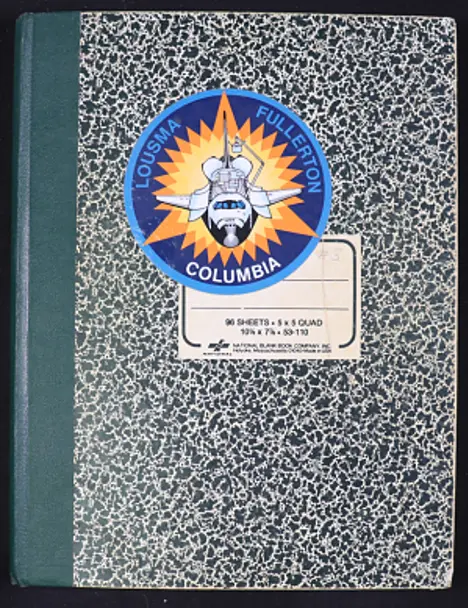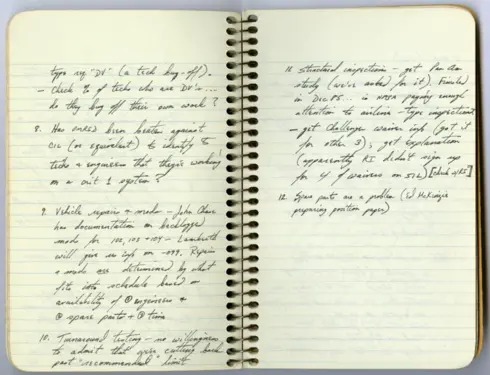
Now Transcribed! The Sally K. Ride Papers
Mar 23, 2020
By Patti Williams
NASA astronaut Dr. Sally K. Ride became a national icon of achievement in science and space on June 18, 1983, when she became the first American woman to fly in space. The Sally K. Ride Papers, consisting of over 23 cubic feet (38,640 pages!) of archival material chronicling Ride’s career from the 1970s through the 2010s, have been fully scanned and attached to an online finding aid, similar to a table of contents.
These new digital assets allow for a much larger audience to view and engage with the entire collection. Without ever visiting the National Air and Space Museum Archives, researchers and students can gain insight into Ride’s lifetime of professional achievements, as an astronaut, physicist, and educator.
To make this collection even more searchable, volunteers with the Smithsonian’s Transcription Center have transcribed many of these records.
Notebook from the Sally K. Ride Papers, held by the National Air and Space Museum Archives, from astronaut Sally Ride's participation in the Rogers Commission investigating the Challenger accident.
Also included in the transcription projects are those centering on Ride’s notes from the NASA Commissions on which she served. Ride was training for her third flight when the Space Shuttle Challenger disaster occurred and she was named to the Rogers Commission, the presidential commission investigating the accident.
Typed up talking points for a press conference about the Columbia accident. From the Sally K. Ride Papers, held by the National Air and Space Museum Archives.
Ride later served on the Columbia Accident Board as well, the only person assigned to both shuttle disaster committees. These notes show how Ride’s NASA’s legacy extended well beyond her actual missions in space, as she investigated causes and recommended remedies after the tragic losses.
The Museum is proud to play a role in securing Ride’s legacy by making this collection readily available to researchers and students for years to come.
This blog was originally published in 2020 under the headline "Transcribing the Sally K. Ride Papers." It was updated in 2025. You can read the original version thanks to the Internet Archive's Wayback Machine.
Related Topics
Related Objects

We rely on the generous support of donors, sponsors, members, and other benefactors to share the history and impact of aviation and spaceflight, educate the public, and inspire future generations. With your help, we can continue to preserve and safeguard the world’s most comprehensive collection of artifacts representing the great achievements of flight and space exploration.
Support the Museum
We rely on the generous support of donors, sponsors, members, and other benefactors to share the history and impact of aviation and spaceflight, educate the public, and inspire future generations. With your help, we can continue to preserve and safeguard the world’s most comprehensive collection of artifacts representing the great achievements of flight and space exploration.






